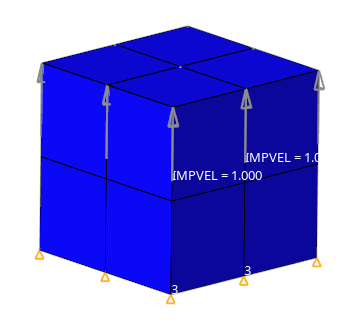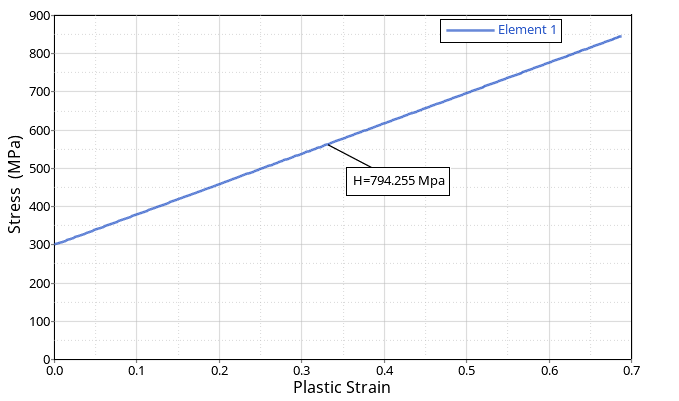RD-V: 0200 Hardening Modulus
The plastic hardening modulus is evaluated in a Johnson-Cook material.

The /MAT/LAW2 (PLAS_JOHNS) material model is used to study the plastic hardening modulus of a material.
Options and Keywords Used
/MAT/LAW2 (PLAS_JOHNS)
Input Files
The following input file is used in this example:
<install_directory>/hwsolvers/demos/radioss/verification</material/0200_hardening/
Model Description
A tensile loading is applied to a cube with side lengths 25.4 mm. The bottom of the cube is fixed in the z-direction and an imposed velocity of 508 mm/s in the z direction is applied to the top of the block. The simulation was run to a final time of 0.05 seconds. A two elements per side mesh was studied.
The plastic hardening modulus, H, is used as the problem metric. In Radioss, the plastic hardening parameter, b, in /MAT/LAW2 (PLAS_JOHNS) material law is the same as the plastic hardening modulus, H.
The following system is used: mm, s, Mg.
Results
The plastic hardening modulus is the slope of the stress versus plastic strain curve.

Conclusion
As shown in Figure 2, the hardening modulus from the simulation, H=794.225 Mpa, exactly matches the value input for “b” in /MAT/LAW2 (PLAS_JOHNS).